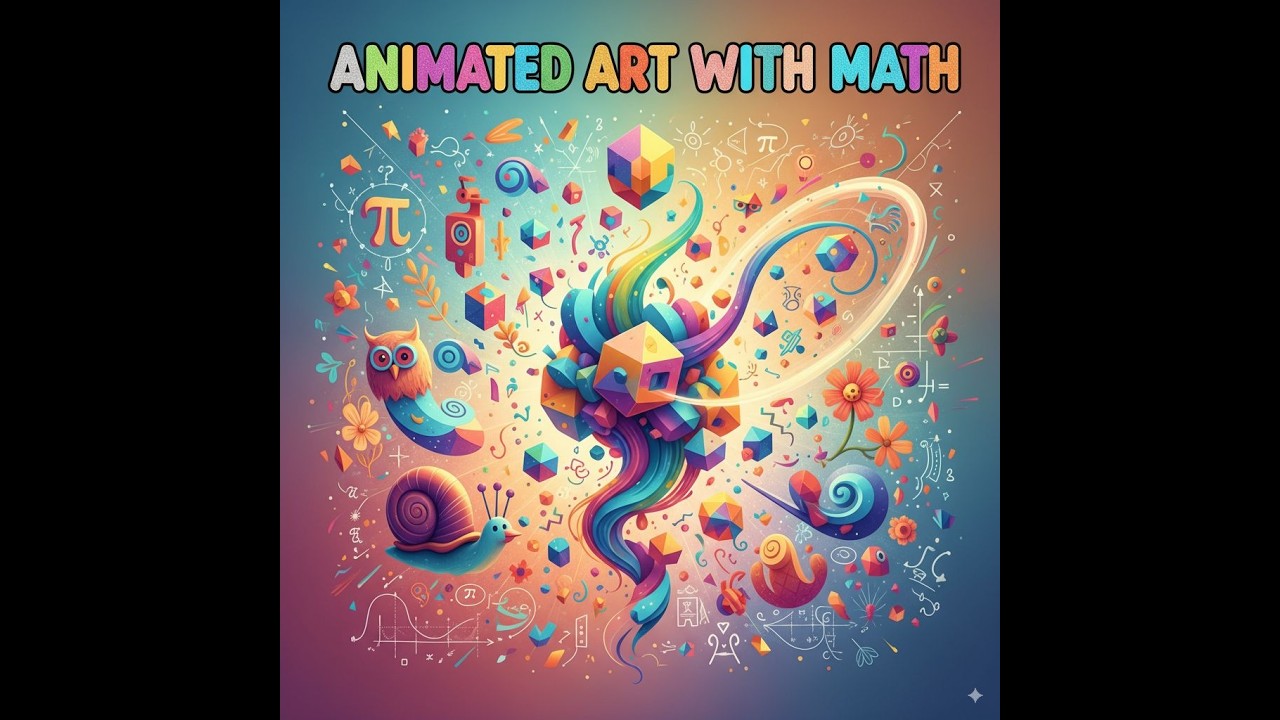The video introduces how to create beautiful animated art using p5.js by leveraging simple mathematical concepts like sine and cosine within minimal code, demonstrating how trigonometry and loops can generate dynamic patterns and shapes. It encourages experimentation with parameters to explore various visual effects and offers additional resources through the creator’s Patreon for those interested in learning more.
In this video, the creator introduces the basics of creating artistic animations using math, specifically with p5.js, a JavaScript library for creative coding. They showcase how simple code, often just 10 to 15 lines, can generate beautiful animated art inspired by an artist named Yuri. The animations rely heavily on trigonometric functions like sine and cosine to create rotating dots and other dynamic shapes. The presenter emphasizes that even with minimal code, one can produce visually appealing results by manipulating mathematical functions and loops.
The video explains how p5.js works with functions like setup and draw, where draw is automatically called repeatedly to create animation frames. Time is a crucial variable that influences the speed and motion of the animations, and adjusting it can speed up or slow down the visual effects. By changing parameters such as the radius or the offset of points, the creator demonstrates how the position and movement of dots can be altered, resulting in different patterns and motions. This hands-on approach helps build intuition about how trigonometry relates to visual art.
The presenter also explores more complex animations involving multiple rotating circles moving at different speeds and directions. They show how dividing the time variable affects the rotation speed and how negative time values can reverse the direction of motion. By combining sine, cosine, and other mathematical functions like the hypotenuse, more intricate shapes and animations emerge. The creator encourages experimentation with these variables to discover new artistic effects and shares that the code files are available on their Patreon for those interested in learning further.
A significant portion of the video is dedicated to explaining how loops work in p5.js to draw multiple dots and create patterns such as spirals and flower-like shapes. By adjusting the number of dots, angles, radius, and the number of petals, the creator demonstrates how to generate a wide variety of forms. They highlight that p5.js continuously calls the draw function, which allows for smooth, ongoing animations. The nested loops and trigonometric calculations enable the creation of complex and captivating visuals from relatively simple code.
Overall, the video serves as an introductory guide for beginners interested in combining math and programming to create animated art. The creator shares their learning journey, acknowledging that they are still developing their understanding of calculus and trigonometry but find this artistic approach helpful for gaining intuition. They invite viewers to experiment with the code, explore the mathematical concepts, and enjoy the creative process. The video concludes with an invitation to join their Patreon for more resources and support.
